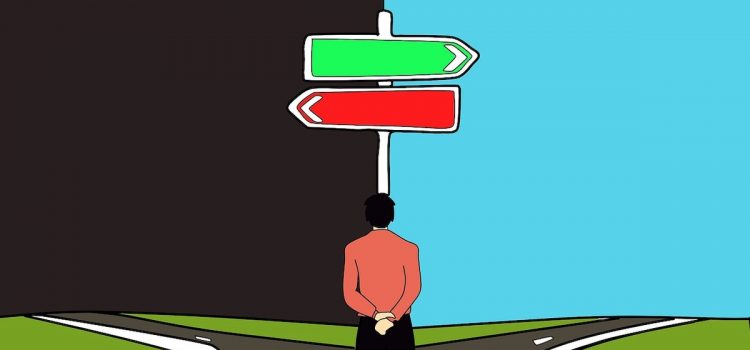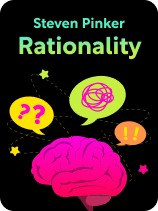

This article is an excerpt from the Shortform book guide to "Rationality" by Steven Pinker. Shortform has the world's best summaries and analyses of books you should be reading.
Like this article? Sign up for a free trial here.
How do you choose between options? What is rational choice theory, and what does it have to do with the way you make decisions?
Rationality by Steven Pinker is both a call to action and a how-to manual for thinking and acting more rationally. Pinker explains that economists, philosophers, and others have defined rationality using rational choice theory.
Continue reading to learn what this theory is and how it applies to your everyday life.
Rational Choice Theory
What is rational choice theory? It states that people will choose between options with the aim of maximizing the rewards of their decision. More specifically, when making a rational decision, a person considers the possible outcomes of each option, judges how much they want (or don’t want) each outcome, and considers how likely each outcome is to happen. This analysis yields an option’s “expected utility”: its potential rewards weighted by both desirability and probability. A rational person then chooses the option with the highest expected utility.
For example, if someone is deciding if they should pack a warm coat for a trip, they’ll first weigh the possible outcomes of each option by desirability. If the weather gets cold, they’ll be happy they packed the coat. But if the weather ends up being warm, they’ll be annoyed that they wasted space in their suitcase on such a bulky and heavy item. They’ll then weigh the likelihood of each option: Is it more likely the weather will be cold or warm? And, from there, they’ll decide which option has the highest expected utility, and they’ll make that choice.
Pinker notes that one person’s judgment of expected utility might differ from someone else’s if their values are different. This doesn’t mean that either choice is more or less rational than the other—they can be different but still be equally rational. If Joe is sensitive to cold, he might opt to bring a coat even if it might mean overpacking, while Jenny, who doesn’t mind the cold as much but hates overpacking, might leave her coat at home even if it might mean being chilly. Both choices are rational because they each align with the expected utility as determined by each chooser.
| Rational Choice Theory Through the Ages Rational choice theory was first proposed by 18th-century economist Adam Smith, who argued that people perform a cost-benefit analysis on every decision to maximize their individual rewards. Though Smith didn’t detail how a person would weigh desirability versus probability like Pinker, his overall theory aligns with the underlying theme of Pinker’s argument: People make decisions according to what they think will benefit them. Smith primarily focused on measurable, financial rewards, but in the mid-20th century, thinkers in other fields, including social behaviorists, political scientists, and criminologists, adopted the theory and broadened it to account for how people navigate not just economic decisions but also relationships, using the theory to describe how people make decisions when interacting with others. In this way, the theory has been adapted to describe and predict human behavior in any number of situations, not just economic circumstances as originally intended. |
Pinker notes that, while people may not have the time nor inclination to thoroughly calculate the expected utility of every decision, if they think in these terms more often, they’d make better decisions overall. In the following sections, we’ll look at reasons people fail to think rationally and techniques people can use to think critically more often.
(Shortform note: In The Paradox of Choice, Barry Schwartz argues that not only is it not feasible to fully weigh the pros and cons of every decision (as Pinker notes), but it’s also not desirable. He distinguishes between maximizers, who weigh each choice (even small ones) carefully for the best possible option, and satisficers, who more quickly accept options that meet their standards even if not perfect. He argues that maximizing takes up more time than it’s worth and leads to stress while satisficing leads to decent enough results without the need to carefully think through the nuances of every option. In this way, he and Pinker align in their realistic approach to how far a person can push rationality.)

———End of Preview———
Like what you just read? Read the rest of the world's best book summary and analysis of Steven Pinker's "Rationality" at Shortform.
Here's what you'll find in our full Rationality summary:
- Why rationality and reason are essential for improving our world and society
- How you can be more rational and make better decisions
- How to avoid the logical fallacies people often fall victim to






